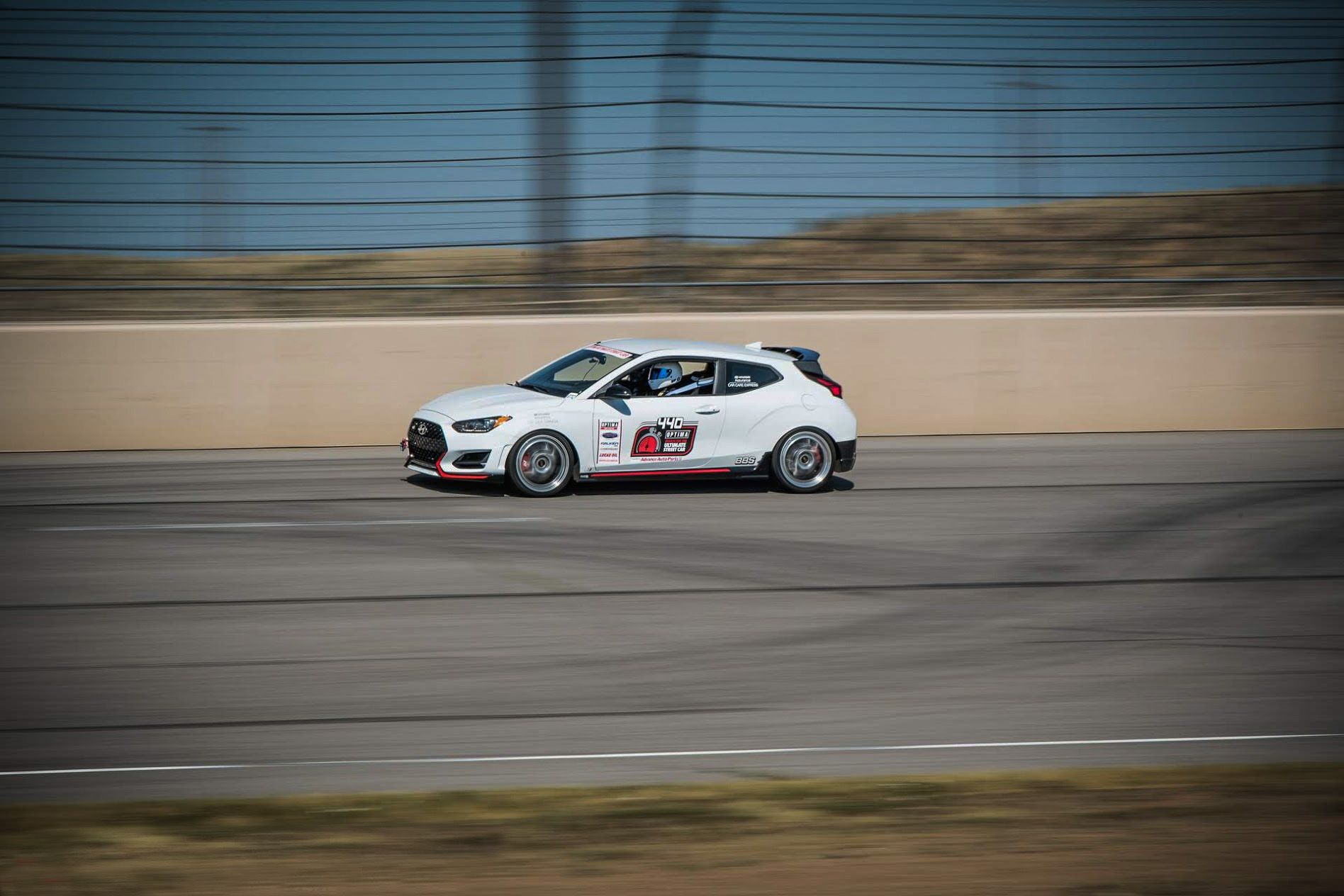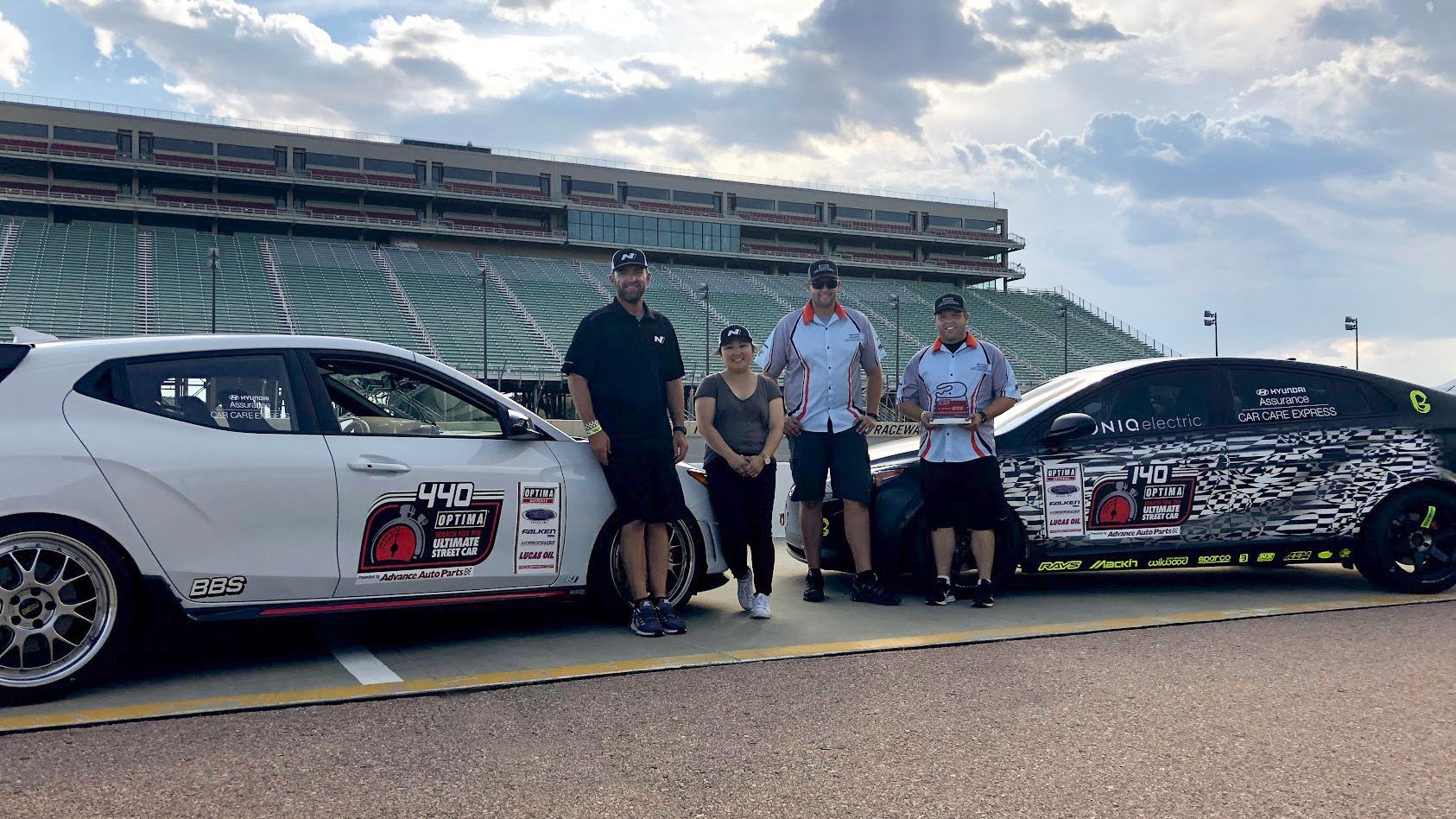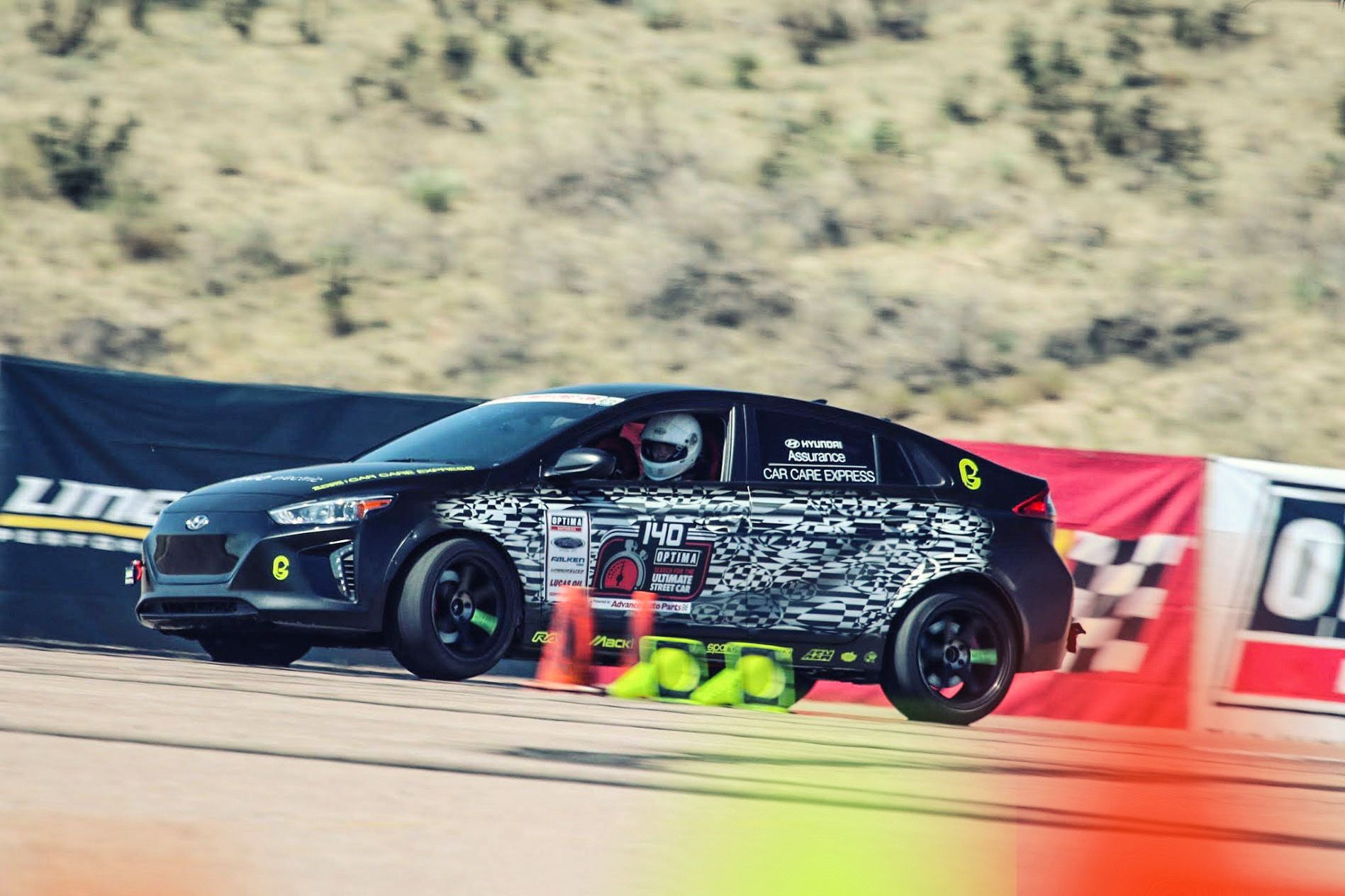With the 2018 SEMA Auto Show a month away, Hyundai is getting the anticipation started by unveiling modified versions of the Veloster N and the Ioniq Electric sedan. Hyundai created the two one-off models not only to showcase their aftermarket potential but to compete in Optima Batteries’ 2018 Search for the Ultimate Street Car. The Ioniq Electric will defend its 2017 National Championship in the GTE class while the Veloster N will compete in the top GTC class. Both cars will compete in the last two Ultimate Street Car events as part of Hyundai’s plan to use the two vehicles to “collect data on multiple tracks across the country to aid in development and validation.”
Hyundai’s getting ready for SEMA season with a pair of knock-you-off-your-socks versions of the Veloster N and Ioniq Electric.
First, let’s take a look at the Veloster, which largely retains its sporty hatchback appearance. The only addition to its exterior design is a custom APR front splitter and side skirts.
To get the Veloster race-ready, Hyundai equipped the hot hatch with a cat-back exhaust system, to go with a Powerizer and Responder systems from Remus. The Powerizer system is responsible for modifying the engine mapping of the Veloster’s 2.0-liter four-cylinder turbocharged engine while the Responder system is in charge of improving the hatch’s throttle response. Prototype versions of a cold-air intake and a high-capacity charge-air cooler were also installed. All told, the one-off Veloster’s turbo packing four-cylinder unit can produce 275 horsepower and 260 pound-feet of torque.
On the suspension front, Hyundai fitted the one-off Veloster with 30 mm (1.1 inches) lowering springs from H&R, a strut brace and subframe supports, and prototype adjustable sway bars measuring 23 mm (0.9 inches) in the front and 22 mm (0.86 inches) at the back.
Now, let’s move on to the Ioniq Electric, which is also the more interesting of the two one-off creations.
A limited slip differential, a Wilwood braking system, lowering springs, cooling upgrades, and a set of 18-inch Volk racing wheels wrapped in Bridgestone tires are also among the list of additions to the one-off Ioniq racer.
Further reading
Read our full review on the 2017 Hyundai Ioniq Electric.
Read our full review on the 2019 Hyundai Veloster N.
Read more Hyundai news.




